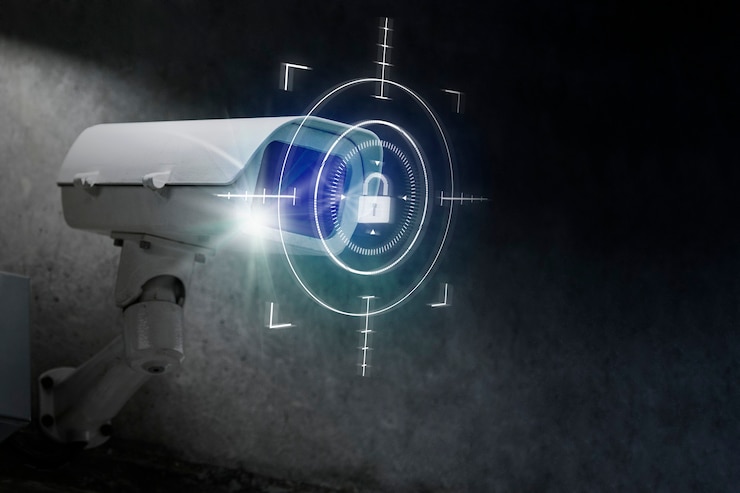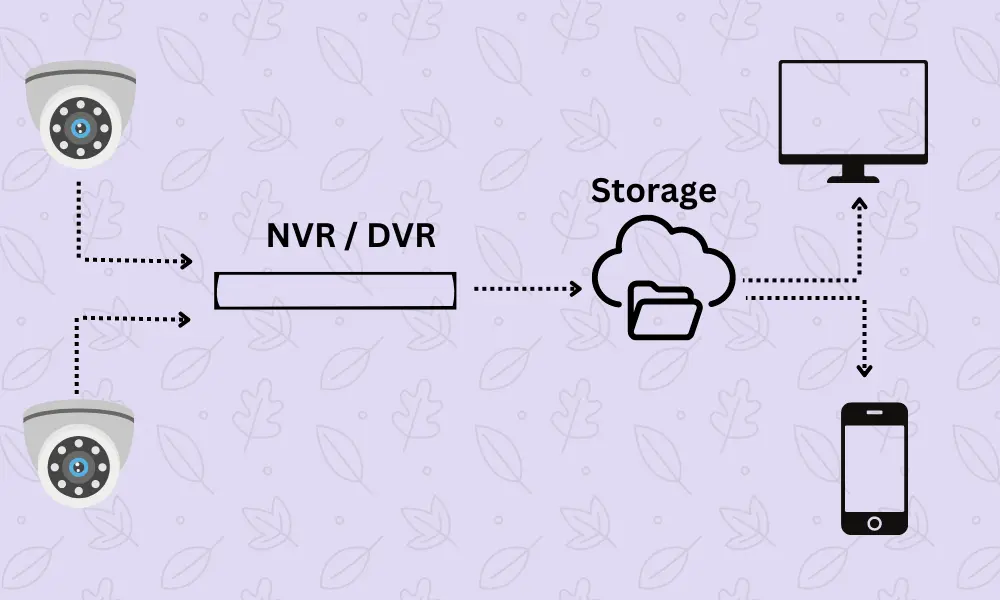CCTV stands for closed-circuit television, is a system used for video surveillance. Unlike regular TV broadcasts that everyone can watch, CCTV broadcasts are private. They are sent to specific monitors or devices. This system is designed to enhance security by monitoring specific areas.
CCTV is commonly used to prevent crime, ensure safety, and help in emergency situations. Businesses, government offices, homes, and even streets are equipped with CCTV cameras for continuous monitoring.

History of CCTV
CCTV has been around for decades. It was first developed in 1942 by German scientists to monitor the launch of rockets. The technology quickly expanded, and by the 1960s, CCTV systems were being used in the United States for security purposes, including during the testing of atomic bombs. Over time, CCTV has become a critical tool for monitoring various activities and protecting people and property.
Applications of CCTV
CCTV systems have various applications in different industries, all contributing to improving security and efficiency.
Crime Prevention and Management
One of the most common uses of CCTV is crime prevention in both homes and businesses. Visible cameras around residential properties and commercial buildings deter potential criminals, reducing the chances of theft, break-ins, or vandalism. If a crime occurs, CCTV footage serves as crucial evidence that law enforcement can use to investigate and prosecute offenders, offering added security and peace of mind to homeowners and business owners.
Business Security
Businesses frequently use CCTV to monitor both customers and employees. They position cameras at strategic points to record all activities, helping to prevent theft and fraud. In addition, many organizations install security cameras to monitor restricted areas and ensure employees follow company rules and regulations.
Traffic and City Monitoring
In many cities, CCTV cameras are installed at traffic lights and public spaces to monitor people’s movements. These systems help authorities collect traffic data, enforce traffic rules, and investigate accidents; they are also used to ensure public safety in high-traffic areas.
Disaster Management
During emergencies, CCTV can be vital in coordinating rescue operations. For instance, cameras in disaster zones can help responders assess the situation and act accordingly. CCTV footage provides real-time information to emergency teams, whether it’s a fire, flood, or any other catastrophe.
Retail and Market Analysis
CCTV is used for security purposes in stores and for analyzing consumer behavior. Retailers use surveillance cameras to understand how customers move through their stores, which products they interact with, and which areas attract the most traffic. This data helps businesses optimize store layouts and improve marketing strategies.
Medical and Health Monitoring
CCTV systems are also used in the healthcare sector to monitor patients. In hospitals, cameras can observe patients needing constant supervision, such as children, the elderly, or those with critical health conditions. The cameras can help medical staff detect signs of distress or emergencies, like heart attacks or seizures.
Observing Crowd and Behavioral Research
CCTV has proven valuable in behavioral research. For example, studies on suicide attempts in train stations revealed that 83 percent of individuals trying to jump in front of a train exhibited certain behaviors before their attempt. This data was later analyzed from CCTV footage and is now used to train monitor watchers to identify and potentially prevent such incidents.
CCTV networks are also employed in other areas of behavioral research, such as observing crowd movements in public spaces to monitor and deter anti-social behaviors. In schools, security cameras are used not only for safety but also to document instances of bullying or playground incidents, providing valuable footage that can aid in addressing these issues.
How CCTV Works?

CCTV systems typically consist of several key components: cameras, recorders, and monitors. Here’s a simple breakdown of how these components work together:
Cameras:
CCTV cameras capture video footage. These cameras can be either analog (which record lower-resolution images) or digital (which provide higher-resolution footage). The footage is sent either via cables or wirelessly.
Recorders:
The video footage is then sent to recording devices, such as a DVR (Digital Video Recorder) or an NVR (Network Video Recorder), where it is stored. Recorders can analyze video using software that detects movement or specific events, triggering alerts.
Monitors:
Finally, the footage can be viewed live or replayed on monitors. Some systems use AI to monitor footage automatically, alerting operators to suspicious activity.
Types of CCTV Systems
Analog CCTV: Analog systems are more traditional and use coaxial cables to transmit video footage. While they are more cost-effective, their resolution is lower than that of modern digital systems. These systems are still widely used, especially in smaller or older installations.
Digital CCTV: In a digital CCTV system, cameras convert the footage directly into digital data, which can be stored on computers or servers. Digital systems offer better image quality and can use advanced features like facial recognition.
IP Cameras (Network CCTV): Internet Protocol (IP) cameras are the most advanced type of CCTV system. They send footage over a network, allowing for remote access. These cameras often have WiFi capabilities, high-definition recording, and intelligent software to recognize faces or count people.
All three choices are still widely utilized, with a strong inclination towards IP camera systems and digital video cameras.
Pros and Cons of CCTV Systems
Each type of CCTV system comes with its own benefits and limitations:
Analog Systems:
These systems are affordable and simple to install but have lower resolution and require more cabling. They also need more flexibility and features of more modern systems.
Digital Systems:
Digital systems provide high-resolution video, improved image quality, and intelligent features; however, they need more storage space and can cost more.
Network CCTV (IP Cameras):
IP cameras provide the most advanced features, including remote monitoring and better resolution. However, they can be expensive, and there is a learning curve in setting up and managing the system.
Privacy and Ethical Concerns
One of the main concerns with CCTV systems is privacy. Some people feel uneasy knowing they are constantly being watched, and there have been debates about whether this infringes on personal privacy rights. To address these concerns, many organizations have implemented strict data protection policies and use software that ensures only authorized personnel access footage.
The Future of CCTV
CCTV technology is continuously growing in the future. We can now see more integration of Artificial Intelligence (AI), facial recognition, and smart sensors in CCTV systems. These technologies enable surveillance systems to operate autonomously with less human intervention. In addition, we will see more increased use of CCTV in public spaces to enhance security and manage urban infrastructure.
Final Thoughts
CCTV security has grown from a primary security tool into a critical system across industries for safety, monitoring, and data collection. As technology advances, so will CCTV systems, offering even more sophisticated ways to keep people and property secure. Whether it’s a home, a business, or a public area, CCTV will continue to play an essential role in our everyday lives.








